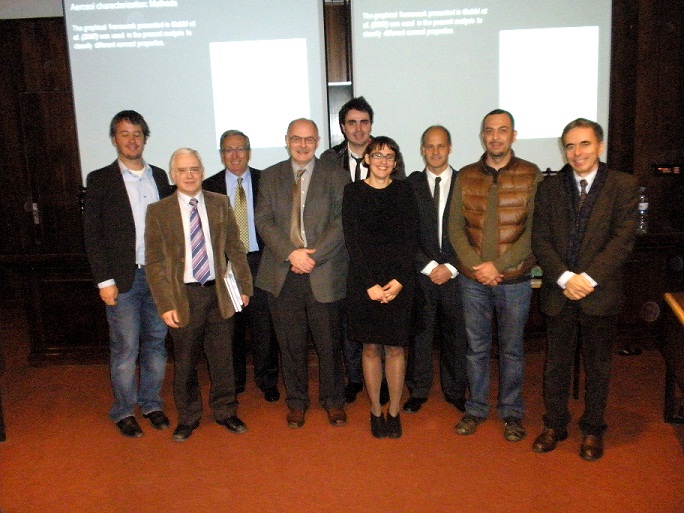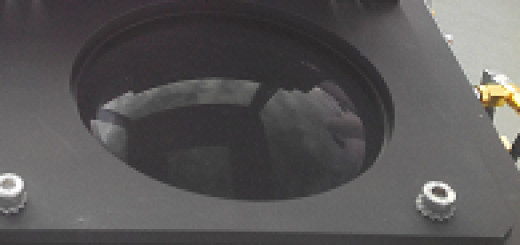Dr. Sara Basart earned her PhD in Environmental Engineering
![]()

Dr. Sara Basart earned her PhD in Environmental Engineering (Degree of European Doctor) on January 30th with the top rating “Cum Laude” at the Technical University of Catalonia (UPC) with a Dissertation entitled “Mineral dust model evaluation through ground-based and satellite observations in Northern Africa, Europe and the Middle East“. The Thesis was developed at the Barcelona Supercomputing Center (BSC). The Supervisors were Dr. Carlos Pérez (NASA Goddard Institute for Space Studies & Dept. of Applied Physics and Applied Mathematics, Columbia University) and Dr. Emilio Cuevas (Izaña Atmospheric Research Center; AEMET), with Prof. José María Baldasano (UPC-BSC) as Tutor. Download the pdf Thesis manuscript here.
The Doctoral Thesis Committee was:
President: Dr. Slobodan Nickovic (WMO-Switzerland)
Secretary: Prof. Adolfo Comerón Tejero (UPC-Spain)
Examiner 1: Dr. Gian Paolo Gobbi (CNR-Italy)
Examiner 2: Dr. Nicolás Huneeus (LSCE-France)
Examiner 3: Dr. Vassilis Amiridis (NOA-Greece)

From left to right: Dr. Huneeus, Prof. Comerón, Prof. Baldasano, Dr. Nickovic, Dr. Pérez, Dr. Basart, Dr. Cuevas, Dr. Amiridis and Dr. Gobbi.
Dr. Basart was working with a graduate research fellowship at the Izana Atmospheric Research Center (AEMET) in the period 2005-2007. She was involved in maintenance and operation of atmospheric aerosol instruments, getting familiar with available remote sensing dust products, as well as with ground-based observations. There she started her first studies about desert dust intrusions over Spain, focusing on the evaluation of the regional mineral dust model outputs in the framework of the project “Improvement of the Dust Regional Atmospheric Model (DREAM) for the prediction of the Saharan dust events in the Mediterranean Basin and the Canary Islands” funded by Spanish Ministry of Science and Innovation (ref. CICYT CGL2010-19652). Later (from 2008 to the present), she got a position as Graduate Research Assistant at the Earth Sciences Department (Barcelona Supercomputing Center). She has been the person in charge of maintenance and operation of desert dust predictions for Northern Africa, Europe and Asia regions with BSC-DREAM8b model (http://www.bsc.es/projects/earthscience/DREAM/). She performed analysis of aerosol observational datasets and the implementation of near real time model evaluation. She carried out studies on desert dust intrusions, dust model evaluation and model intercomparisons within the framework of the World Meteorological Organization Sand and Dust Storm Warning Advisory and Assessment System Programme (SDS-WAS; http://sds-was.aemet.es/), and studies related to air quality levels over Europe with CALIOPE.
Summary of the Thesis:
The impact of mineral dust upon climate, ecosystems and air quality represents a major scientific and societal issue. The aim goals of the present PhD thesis are to evaluate the behavior and to improve the forecasting skills of a regional dust model and to characterize the desert dust content in Northern Africa, Europe and Middle East.
An aerosol characterization was performed using long-term series of aerosol optical depth (AOD) from AERONET sunphotometers. The results showed that mineral dust was the most important constituent in Northern Africa and Arabia. Small particles were abundant in sites close to urban and industrial areas of Continental and Eastern Europe and Middle East, and important contributions of biomass burning were observed in the sub-Sahel region in winter. Desert dust transport to Southern Europe was observed from spring to autumn and decreasing with latitude with contributions above 40% to the aerosol column load.
Dust models are essential to complement dust-related observations, understand the dust processes and predict the impact of dust on air quality. Despite that the BSC-DREAM8b model has reached a level of delivering reliable operational dust forecasts, it is necessary to conduct an extensive evaluation of its behavior. The BSC-DREAM8b and the original DREAM models and different research model versions were evaluated over Northern Africa, Mediterranean and Middle East using AERONET measurements and seasonal averages from satellite aerosol products. The model evaluation highlighted that BSC-DREAM8b and DREAM strongly underestimated the dust fields in the Sahel during winter and overestimated dust concentrations during spring rainy events in the Mediterranean. The introduction of new dry deposition scheme and an update in the wet deposition scheme improved the long-range transport, although significant underestimation remained in the Sahel in winter. The inclusion of a preferential source mask improved the localization of the main North African sources and the long-range dust transport to Europe and Atlantic regions. The inclusion of a more physically-based dust emission scheme with a new soil texture database led to reasonably good results at source areas and subsequent long-range transport. In this case, the use of a preferential source mask did not introduce significant improvements.
The long-range dust transport over Europe was evaluated and analyzed with an annual simulation of the CALIOPE air quality modelling system. CALIOPE includes CMAQ which calculates biogenic, anthropogenic and sea salt aerosol; and BSC-DREAM8b which provides desert dust. For the evaluation, we used daily PM10, PM2.5 and aerosol components from the EMEP/CREATE network; total, coarse and fine AOD from AERONET and seasonal averages from satellite aerosol products. Overall CALIOPE could reproduce reasonably well the daily variability of the main components and the seasonal aerosol patterns in Europe. However, the PM and AOD levels were underestimated. The most underestimated aerosol components were carbonaceous matter and secondary inorganic aerosols (SIA). A simple model bias correction based on the chemical composition observations was applied to the model simulation to provide an estimation of the spatial and seasonal distribution of aerosols over Europe. The simulated aerosol concentrations presented maximum values over the industrialized and populated areas of the Po Valley and the Benelux regions. SIA were dominant in the fine fractions representing up to 80% of the aerosol budget in latitudes beyond 40ºN. A second maximum was detected over Eastern and Southern Europe. High values in Southern Europe were linked to Saharan dust transport which contributed up to 40% of the total aerosol mass. Maxima dust seasonal concentrations were found between spring and early autumn. These results showed that desert dust is the main responsible of the exceedances of the PM10 EU air quality threshold in large areas south of 45ºN.







